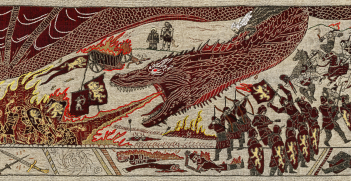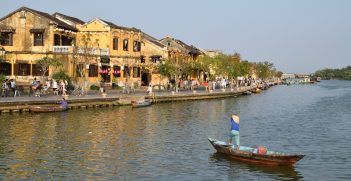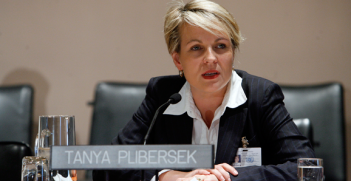North Korea In the Age of ISIS

In the age of ISIS, North Korea no longer represents the threat it once did. In order to get the attention it craves, they may begin playing a dangerous game of one-upmanship.
Each year in North Korea people plant their crops. Then they harvest them. The next crop is placed on the same field. Nothing is rotated and over time yields decrease. The same idea is applied, year after year and the result is increasing entropy. The main debate that hangs over all analysis of that country relates to how much can be sustained before collapse? The discussion does not frame these actions within the context of increasing entropy; rather it is viewed as a series of unstable and inflammatory events awaiting an explosion. For all of its bellicosity North Korea is rarely explosive. Even events that are often described with superlatives are anticlimactic. From when an engagement policy is announced to the changing of leaders everything is discussed as decisive when what is really happening is the development of entropy. For all of their aggression, all policies are a rear guard action, attempting to sustain an encysted system and an inept leadership.
North Korea therefore maintains a strange relationship with the contemporary pace of hyperbolic news. Each announcement or action is shocking but like their agriculture, faces diminishing returns. In the post-Cold War era when the threats were fresh and the prose still shocked the North was able to leverage a credible threat into aid and strategic space. Pyongyang’s weapons were scary, their threats real and the prospect of nuclear weapons something altogether too terrible to contemplate. Now, the weapon is complete, the regime is more hollow and they have cried wolf enough that a repeat of the same strategy yields diminishing returns.
The same is true of engagement strategies. In 1998 when President Kim Dae Jung of South Korea began the Sunshine Policy, the prospect of a negotiated settlement seemed more real. Over time hopes have been dashed as many leaders have had their good faith steps result in little concessions, facing a cynical government that appears to exploit all measures as signs of weakness. Those efforts were derailed by the North’s nuclear program. In lieu of trust from South Korea, the North in turn burned relations with Japan, China and the United States. In each case one could commend them for their aptitude in doing so as it has allowed the regime to continue but it has traded credibility for time and increased entropy as a by-product. The costs of such a policy are clear, the North’s diplomats, once feared, now mewl at hairdressers. It has figuratively burned its bridges and in the case of China, quite literally failed to build new ones.
Across its nuclear and engagement strategies the North is facing significant diminishing returns. It is not clear how the continued application of the same would be likely to achieve anything further. Certainly Pyongyang could develop missile capabilities but it is not clear what additional advantage this would add aside from extending the range at which it could expand its threat into the Pacific Ocean. The North’s strategy of remaining in power impacts on the extent to which they can leverage that threat. The North having once been seen as the preeminent global threat now must also contend with newer more vigorous applicants for that position. As a result they now appear more akin to a cantankerous old man asleep on the couch that occasionally wakes, shakes his cane and demands that his meds be refilled.
What then is the future of North Korean strategy? Certainly it is entirely possible that China has successfully fenced it in but the North still has options. It is unlikely they will find good faith in engagement easy to develop. The Obama Administration is the most engagement oriented President since Carter and he has elected to isolate the North rather than trade with them on bad faith. Given present global trends the next President is unlikely to be a greater dove than the present one. As a result the North has limited its own options. Engagement is not easy to resurrect and threats are not likely to achieve significant gains.
There is only one viable pathway to rebuild their international reputation for threat and that is to resort to actual violence. In 2010 when the North sank the ROKS Cheonan it represented a willingness to follow through on their threats and as a result the next round of bellicosity resulted in greater attention, even if it did not result in significant diplomatic gains. Limited uses of violence, combined with proliferation are the two remaining tactics that Pyongyang can employ that do not face diminishing returns.
The rest of the world then ought to recognise that this tactic is something we need to plan for. If they elect to use those options in order to drive other states to the negotiating table then that is something that ought to be anticipated and to the extent it can be, hedged against. The area of exploitative relations between the North and other states is something that only worked because the other states involved did not learn from one another. Each state, by not drawing upon the others experience, forced itself to repeat the same lessons.
If the North perceives that its strategies are not being taken as seriously as before then the possibility of a repeat of Cheonan is very real. One of the more obvious steps that could be taken is the preparation of joint statements in response. Building a diplomatic consensus takes time and given the possibility, it makes sense to do the groundwork now. Further, the United States could take steps such as developing financial restrictions, discouraging the export of North Korean slave labour and undertaking analysis of their asymmetric warfare capabilities. Imposing costs and being in a position to do so early is likely the best method establishing low level deterrence within this environment.
A more proactive policy is also possible. Developing the space of civil society within North Korea where the government does not maintain full control is also possible. Building networks of information distribution and economic links to neighbouring states that develop interdependence are also useful strategies for pushing the North towards normative behaviour without resorting to violence or explicit confrontation.
From this we can see the likely form of future aggression from North Korea. It is also clear that their existing strategies are subject to diminishing returns and as such it is likely we will see future threats manifest in a more overt form going forward. We are also likely to see those old strategies continued even though their value is not what it once was. This situation however has given both sides a moment of pause. We have hoped that the North would use this space to implement significant reforms but so far that has not happened. Even though they have not taken advantage of this space there is no excuse for us to fail to do so. We have a reasonable understanding of where they might decide to move in the future and time to respond proactively to shape that situation as and before it emerges. We therefore need to take this time and use it to our advantage. Strategic patience is one thing, but strategic drift is more dangerous.
Robert Potter is currently a Research Assistant Volunteer at the John F Kennedy School of Government, Harvard University. He took part in a research program in North Korea and China in 2013, and been a Visiting Scholar at Columbia University – Saltzman Institute of War and Peace Studies, School of International and Public Affairs. This article can be republished with attribution under a Creative Commons Licence.





